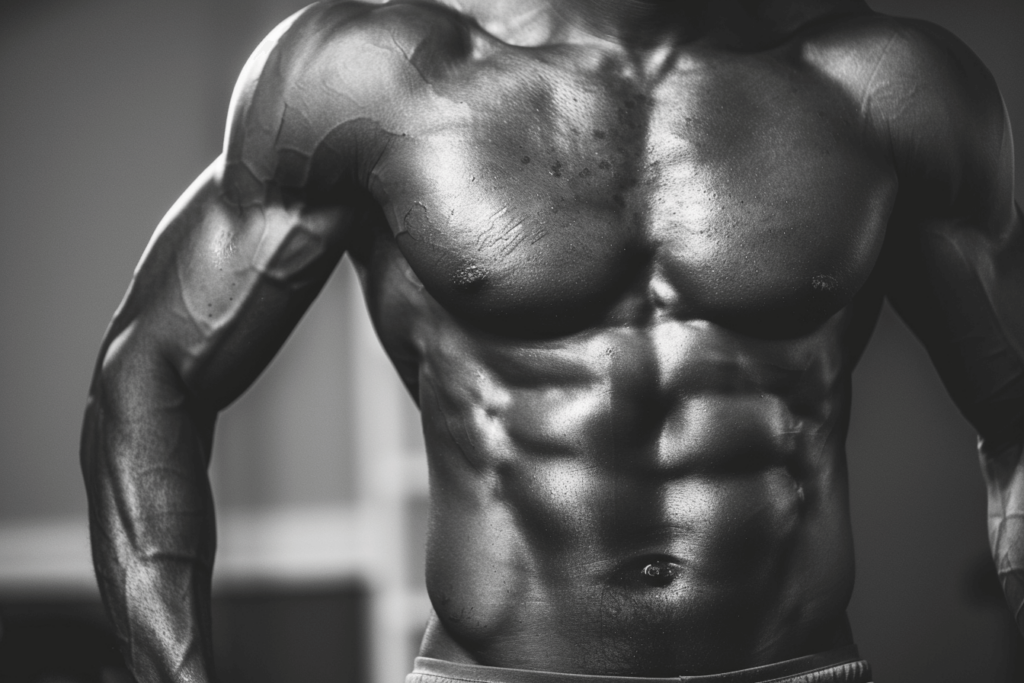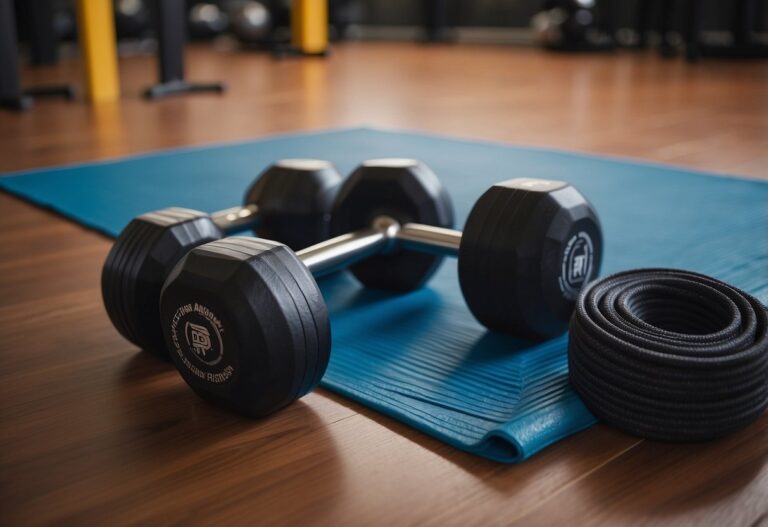Are you trying to find the most effective ab workout tips to get that toned core you’ve always wanted?
No matter where you are on your fitness journey, there’s always room to upgrade your routine and make those exercises count.
Keep in mind that achieving strong and defined abs involves a combination of targeted exercises and overall body fitness.

You’ll be surprised how small tweaks in your workout regime can yield significant results.
From adjusting the way you breathe during exercises to incorporating different types of movements, there are many strategies that can help you maximise your efforts.
So, if you’re ready to learn more and take your ab workouts to the next level, you’re in the right place.
Plank with Leg Lift
The plank with leg lift is a fantastic exercise that targets your core, glutes, and lower back.
To do this exercise, start in a plank position, keeping your body straight and your abs engaged.
Raise one leg straight up, keeping it straight. Hold for a moment, then gently lower it.
Repeat with the other leg, ensuring you maintain a strong plank throughout.
This move helps improve stability and hip mobility.
For added challenge, you can place your hands on a medicine ball.
This variation increases the difficulty and further engages your core muscles while balancing on the ball.
Keep practising to build strength and balance.
Russian Twists
Russian twists are a great move to target your abs, especially your obliques.
To start, sit on the floor with your knees bent and feet flat. Lean your torso back slightly, keeping your back straight, until you feel your abs engage.
Hold your hands in front of your chest and twist your torso to the right, then to the left.
Make sure to keep your core tight and move with control to avoid injury.
You can increase the challenge by holding a weight or medicine ball.
It’s important to breathe steadily while doing this exercise.
Exhale when you twist to the side and inhale when you return to the centre. This helps maintain a steady rhythm and maximises your workout.
Remember to keep your movements smooth and controlled. If you ever feel pain in your lower back, stop and adjust your form.
Russian twists are effective if done correctly and safely. For more details on how to execute them properly, you can refer to this detailed guide.
Bicycle crunches
Bicycle crunches are a great way to target multiple muscle groups in your abs.
To start, lie flat on the floor with your lower back pressed against the ground and your knees bent. Place your hands behind your head.
Lift your shoulders off the ground and bring one knee towards your chest while straightening the other leg.
Rotate your torso to bring your opposite elbow towards the knee that’s bent.
Switch sides and repeat the motion in a pedalling style.
This helps work your rectus abdominis, transverse abdominis, and obliques.
You can check out more details on how to do bicycle crunches at this helpful guide.
For those who experience neck or back pain, you might want to try standing bicycle crunches.
This variation keeps your back in a neutral position while still engaging your abs.
More tips and variations can be found here.
Mountain Climbers
Mountain climbers are a fantastic exercise that works your entire body, especially your abs. They are like a mix of planks and running in place.
To do mountain climbers, start in a plank position.
Ensure your shoulders, core, and glutes are tight. Then, drive one knee up towards your chest and quickly switch legs.
This move not only strengthens your core but also improves your endurance.
Perfect your form by keeping your head in a neutral position and avoiding any hip or lower back movement as you switch legs.
Mountain climbers can be done anywhere, making them a convenient addition to your workout routine.
Trying to fit in a quick workout during a busy day? Just drop down and do some mountain climbers.
Reverse Crunch
The reverse crunch is a great way to target your lower abs. Unlike the standard crunch, you lift your hips off the floor instead of your shoulders.
To do this, lie on your back with your knees bent at a 90-degree angle. Keep your feet off the floor and place your hands by your sides for balance.
Raise your legs towards your chest, lifting your hips off the ground. Squeeze your abs at the top of the movement and slowly lower back down.
Remember to control your movements and don’t let momentum take over.
No equipment is needed for this exercise, just a soft surface to lie on.
The reverse crunch is ideal for those looking to improve core strength and stability. For more information, check out the detailed guide on Verywell Fit.
Flutter Kicks
Flutter kicks are a great way to strengthen your core effectively. They focus on the lower abdominal muscles, helping you build a strong and toned midsection.
To perform flutter kicks, lie on your back and extend your legs at a 45-degree angle.
Keep your arms at your sides and lift your head, shoulders, and neck slightly off the ground. Then, start kicking your legs up and down in a small, controlled motion.
You can change the speed of your flutter kicks to make them more challenging.
Try doing them for a specific number of kicks or sets, like doing 20 kicks per set.
If you want to mix things up, try variations like reverse flutter kicks, which you do while lying on your stomach.
This targets different muscle groups and keeps your workout routine interesting. Check out more variations on this site.
Leg Raise with Hip Lift
The leg raise with hip lift is a powerful exercise for your abdominal muscles. It works both your upper and lower abs, making it highly effective.
To do this exercise, lie flat on your back on a mat. Place your hands by your sides with palms facing down. Raise your legs straight up towards the ceiling.
Engage your core by imagining pulling your belly button towards your spine.
Slowly lift your hips off the floor, pushing your legs upwards.
Return your hips to the floor gently, and then lower your legs slowly without touching the floor. This ensures constant tension on your abs.
For an added challenge, you can place a medicine ball between your feet. This increases the difficulty, so you might simply progress by gradually building up your reps from 10 to 25.
You can perform this exercise with just your body weight, making it ideal for both beginners and advanced fitness enthusiasts.
You’ll notice improved strength in not only your abs but also your hip flexors and glutes.
Hanging Knee Raise
The hanging knee raise is an effective exercise for targeting your lower abs.
To begin, hang from a pull-up bar with your arms fully extended. Keep your legs together.
Slowly lift your knees towards your chest. Remember to exhale and engage your abs as you raise your knees.
Control the movement as you lower your legs back to the starting position. You can start with 3 sets of 8-10 reps for the best results.
For variety, try holding your knees up for a few seconds before lowering them.
Roll-out with an ab wheel
Roll-outs with an ab wheel can be a highly effective way to work on your core.
Start by kneeling on a mat and gripping the handles of the ab wheel. Make sure your hands are shoulder-width apart for balance.
Push through the handles and round your upper back slightly. Keep your spine neutral by tucking your hips under.
As you roll out, let your chest fall towards the ground. Engage your core to pull yourself back to the starting position slowly.
Ab wheel roll-outs may seem challenging at first, but consistency will help you progress quickly. Remember to keep your movements controlled to avoid injury.
For a visual guide, you might find this tutorial useful.
Benefits of Ab Workouts
Ab workouts offer numerous benefits for your body, from increasing core strength to improving posture and enhancing performance in various activities.
Core Strength
Strengthening your core is crucial for overall fitness.
A strong core stabilises your body, helping you during everyday movements and exercises.
When your core is strong, lifting heavy objects, bending over, or even standing for long periods becomes much easier. A robust core also reduces the risk of injuries, especially in the lower back.
You can build core strength through exercises like crunches, which can be done anywhere and are suitable for all fitness levels.
Consistent ab workouts lead to better balance and stability, making you feel more secure and less prone to falls.
Improved Posture
Having a strong core can significantly improve your posture.
Good posture reduces the risk of developing pain in the neck, shoulders, and back.
When you consciously engage your abs, you stand taller and more confidently. This engagement supports your spine and keeps your body aligned properly.
For instance, during activities like walking or sitting at a desk, a strong core helps maintain an upright position.
Engaging in ab exercises that focus on strengthening your lower back and abdominal muscles helps to prevent slouching and promotes better spinal health.
Enhanced Performance
Ab workouts also enhance performance in various physical activities, whether you’re playing sports or just enjoying a run.
For athletes, a strong core translates to improved performance and agility.
For instance, runners with strong abs often experience better endurance and less discomfort. These muscles play a vital role in stabilising your body and generating power during movements.
Simple activities like climbing stairs or gardening can also become less tiring.
Additionally, strengthening your abs can improve your breathing efficiency. This allows for better oxygen intake during workouts. As a result, you can work out longer and harder without feeling as fatigued.
Common Mistakes to Avoid
When it comes to ab workouts, it’s easy to make mistakes that can hinder your progress. Here are some vital aspects to consider to ensure you’re getting the most out of your efforts.
Neglecting Warm-Up
Skipping a warm-up is a common mistake in ab workouts.
Warming up prepares your muscles and prevents injuries. Start with 5-10 minutes of light cardio, such as jogging or jumping jacks.
This increases your heart rate and blood flow, making muscles more flexible.
Follow this with dynamic stretches that target the core, like torso twists and leg swings.
Warming up also helps you mentally prepare for the workout, ensuring better focus and form during exercises.
Don’t underestimate the power of a proper warm-up—it sets the tone for an effective and safe workout.
Overtraining
Overtraining your abs can lead to burnout and injuries.
The abdominal muscles need time to recover, just like any other muscle group.
Doing ab exercises every day without rest can strain these muscles, leading to overuse injuries.
Stick to training your abs 2-3 times a week. Mix it with other exercises to keep your routine balanced and engaging.
Ensure you get enough rest and recovery days to prevent fatigue and overuse. Overtraining can also impede your progress, as muscles repair and grow stronger during rest periods.
Poor Form
Having poor form during ab exercises can reduce effectiveness and increase injury risk.
Common mistakes include using momentum instead of muscle strength, not engaging the core fully, and incorrect body alignment.
For example, during crunches, avoid pulling your neck or using your back to lift. Focus on engaging your core.
For planks, ensure your body forms a straight line from head to heels, without your hips sagging.
Using a mirror or seeking guidance from a fitness professional can help you maintain proper form.
Remember, quality over quantity is crucial—doing fewer reps with correct form is more beneficial than performing many reps poorly.
Ab Workout Routine Recommendations
Achieving strong, defined abs requires consistent effort and a strategic approach. Your routine should focus on the right frequency and progression to keep workouts effective and engaging.
Frequency and Duration
For best results, aim to work your abs 3-4 times a week.
Too much frequency can lead to overtraining, which might hinder progress and increase the risk of injury.
Each session should last about 20-30 minutes, focusing intensely on your core.
Vary your exercises to target different parts of your abs. Include moves like reverse crunches and high to low cable woodchoppers to ensure a well-rounded workout. Don’t forget to allow your muscles time to recover.
Use rest days strategically; working a different muscle group or engaging in light cardio can help keep you active without overworking your abs.
Progression and Variety
Progression is key to continued improvement in your ab workout. Begin with foundational exercises like crunches and sit-ups. As you build strength, incorporate more challenging moves.
Increase the difficulty by adding resistance or altering angles. For example, you can use a decline bench for crunches.
Tracking your progress is essential. Aim to increase reps or weights weekly to keep pushing your muscles. Structured programs, like the 12-week guide, can provide a clear roadmap for progression.
Keeping your routine fresh is important. Incorporate different exercises regularly to prevent boredom and promote balanced muscle development. Repeat the same workout too long, and your body adapts, making gains harder to achieve.







